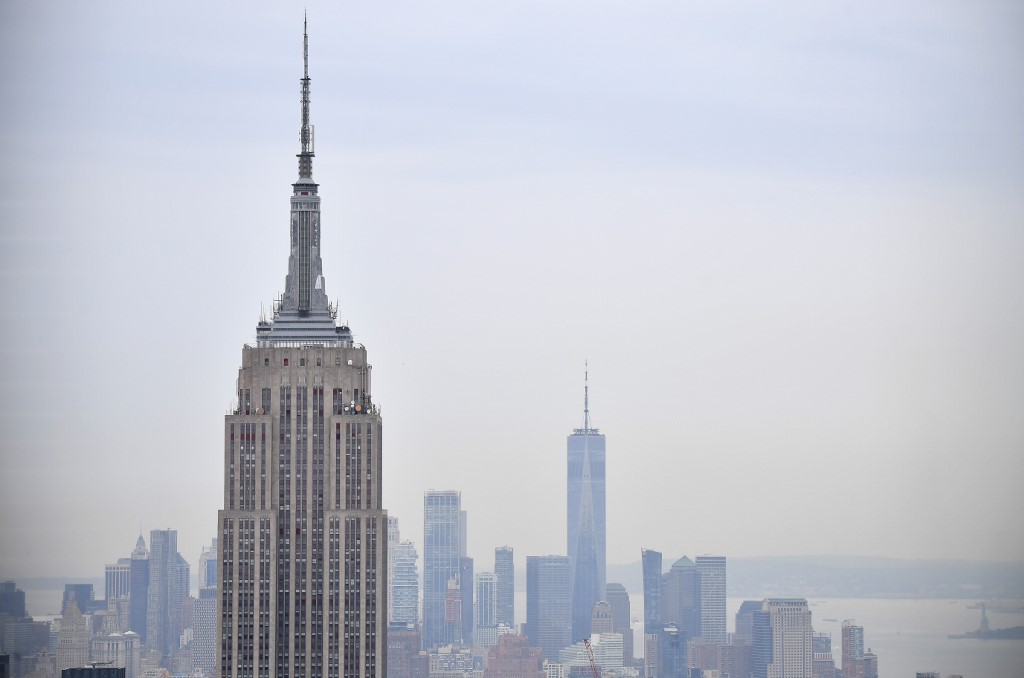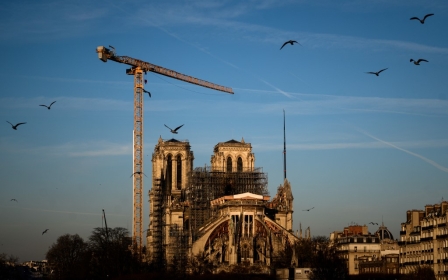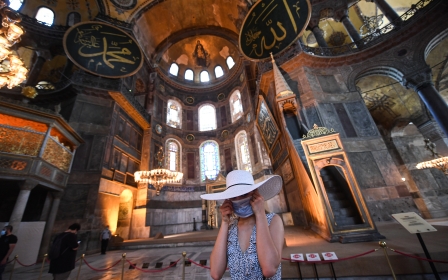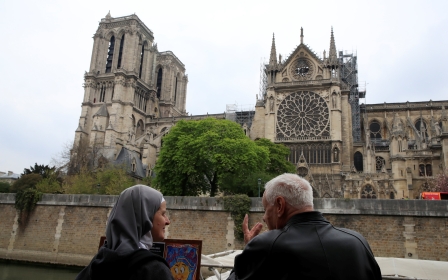America's hidden Islamic architecture points way to a shared culture

With world attention fixed on the US in the final stages of its presidential race, it is an apt time to explore whether key iconic buildings epitomise the nation and its identity.
Many may cite America's dizzying skyscrapers - technical innovations of the 20th century using cast iron, steel and reinforced concrete to achieve verticality and dynamism - as symbols of power and modernity. But can the “American dream” be summed up in one building?
The White House maybe, or the Capitol dome in Washington? Clean, classical facades can mask many things. How widely known is it, for example, that the White House was built by a mix of free and enslaved African-American labourers, or that the Capitol dome achieves its imposing exterior profile by using the Islamic double-dome technique?
Indigenous culture
When the first European colonisers arrived on the American continent, they largely ignored the indigenous culture of the people who already lived there. Christopher Columbus arrived from Spain full of Catholic zeal from the Reconquista, looking for more “Moors” to kill. To this day, the town of Matamoros (Spanish for “Moor slayer”) in northeastern Mexico bears witness.
New MEE newsletter: Jerusalem Dispatch
Sign up to get the latest insights and analysis on Israel-Palestine, alongside Turkey Unpacked and other MEE newsletters
Yet, ironically, the Spanish brought with them many architectural styles that they had adopted from their former Muslim rulers. Perhaps this was not surprising, since “the Moors” had controlled parts of the Iberian Peninsula for centuries. When Christian kings, such as Alfonso XI and Pedro the Cruel, built their palaces in Spain, they chose Mudejar styles and employed Moorish craftsmen. This Islamic influence is still clear in the Spanish Catholic missions of California and other states.
French and British colonisers also brought styles from their homelands into the US. The French government sent skilled French architects and engineers to New Orleans, while the English used the same neoclassical styles that were in fashion at home. Presidents George Washington and Thomas Jefferson both took a deep interest in projecting national identity through architecture, consciously modelling Washington on the ancient Greek ideals of proportion they thought highly suitable for a fledgling democracy.
Yet, for all its classical profile, the Capitol dome achieves its tall outline by using the double-dome method first invented by the Persian Seljuks, then developed further by the Ottoman Turks. The same device of leaving a hollow space between the outside and inside shells had been adopted by Christopher Wren for the dome of London’s St Paul’s Cathedral. Wren called it “Saracen vaulting”, choosing it for its geometric efficiency.
Gothic revival
The English and French also introduced so-called “Gothic”, a popular medieval style that was enjoying a revival in Europe. Wren disputed the term “Gothic”, saying that from the “lightness of its work”, the “excessive boldness of its elevations”, and the “delicacy, profusion, and extravagant fancy of its ornaments”, it could “only be attributed to the Moors; or what is the same thing, to the Arabians or Saracens”.
The timing also fitted, since the style first appeared in the 12th century, soon after the Norman-French knights began returning from Jerusalem and their First Crusade.
Cultures - including religious cultures - interact and interweave in ways that challenge all kinds of assumptions we might make about our history and identity
Strikingly, the US has more Gothic revival architecture in its universities, colleges and schools than any other country in the world. The architecture of Yale University is overwhelmingly Gothic. For many Americans, Gothic is associated with the sophistication of Oxford and Cambridge colleges, along with the great medieval cathedrals of Europe, such as Notre-Dame in Paris.
Yet, Gothic architecture owes many of its features to the styles of Islam - the very people the Crusaders went to fight. Take St John the Divine, for example, the cathedral in Manhattan. Its twin towers, pointed arches, trefoil and multifoil arches, apse, ambulatory, clerestory, choir, rose window, tracery and ribbed vaulting all originated further east, in Byzantine and Islamic Syria, before being blended together in one style on European soil.
“If you like it, steal it” runs the architect’s mantra. The irony is that the Arabic word “Saracens” means “thieves” - yet, it seems, we stole from the thieves. Everything builds on what came before.
Shared vision of the future
At times of plague and pestilence, European medieval Gothic cathedrals were used to treat the sick. During the current pandemic, St John the Divine was proposed as a field hospital for overflow Covid-19 patients from Mount Sinai Hospital. But even that idea was brought back by Crusaders returning from the “Saracen” world, where hospitals for chronic diseases, schools, and institutions for lepers, the lame and the blind were routinely attached to mosques - faith and social welfare blended together, an essential tenet of Islam.
US President Donald Trump, playing to his right-wing base, often uses anti-Muslim rhetoric. In 2017, he introduced a travel ban on citizens from six Muslim-majority countries, and he frequently uses the term “radical Islamic terrorism”.
Yet, this narrative of “the other” belies the evidence all around in the complex, eclectic buildings that reflect the multicultural roots of the US. Perhaps the “American dream” is best summed up not by thrusting skyscrapers, the neoclassical facade of the White House or the imposing Capitol dome, but by the complex mysteries enshrined in the Gothic St John the Divine, with its blend of Byzantine, Islamic, European and American elements.
Nicknamed “the Unfinished”, its apocalyptic facade carries a warning, depicting New York’s twin towers threatened by giant waves and nuclear explosion. But lower down, its Portal of Paradise projects a message of resurrection and rebirth that all can share.
Cultures - including religious cultures - interact and interweave in ways that challenge all kinds of assumptions we might make about our history and identity. The biggest challenge is to steer a course towards a shared and humane vision of the future, a challenge in which architecture has a vital role to play.
The views expressed in this article belong to the author and do not necessarily reflect the editorial policy of Middle East Eye.
This article is available in French on Middle East Eye French edition.
Middle East Eye delivers independent and unrivalled coverage and analysis of the Middle East, North Africa and beyond. To learn more about republishing this content and the associated fees, please fill out this form. More about MEE can be found here.







